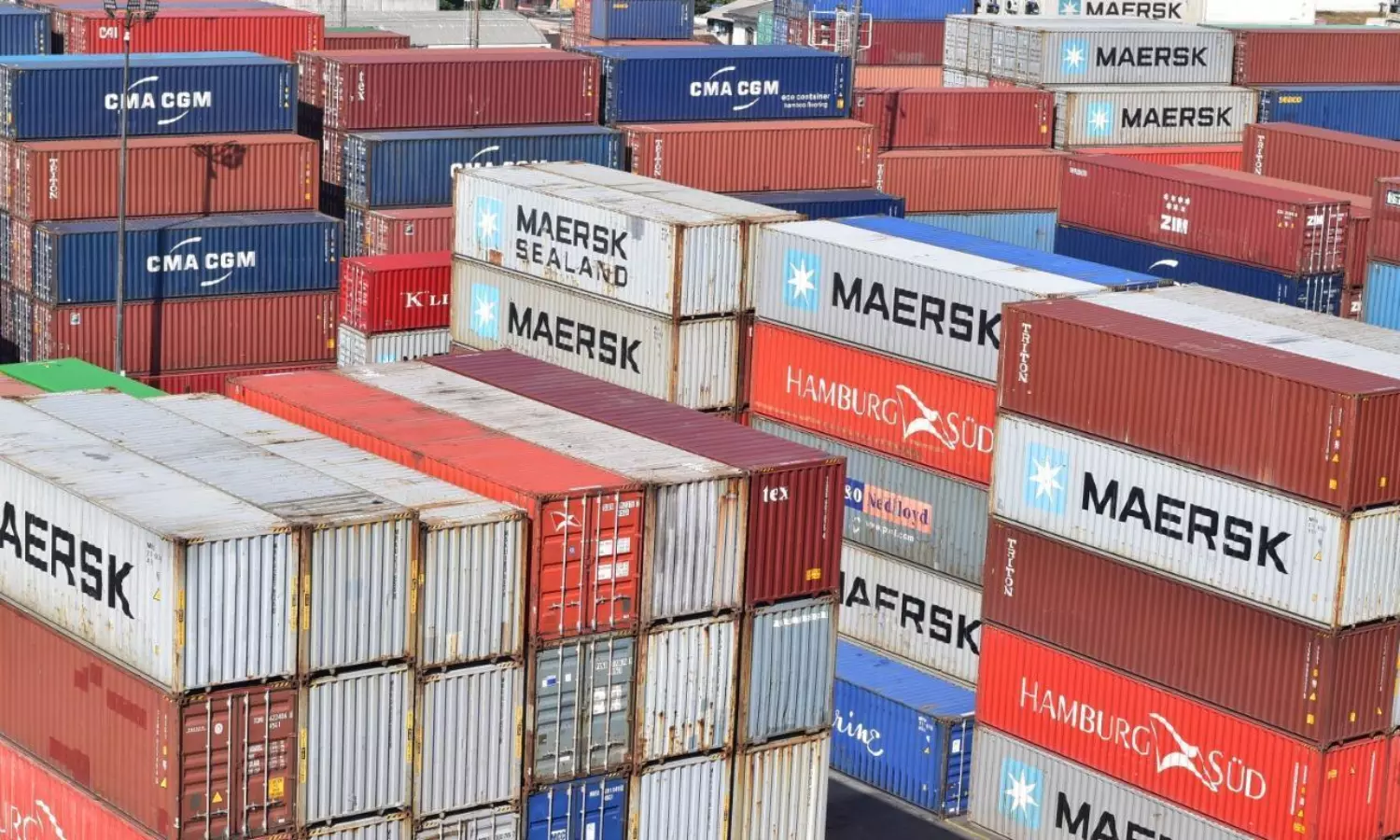Empty containers piling up in U.S. pushing down prices
Container prices have dropped by 30% in two months across east and west coast and more than halved at some ports.

Photo by Andres Canavesi on Unsplash
One of the many challenges for the supply chain now, according to an analysis by Container xChange, is the overflowing container depots in the U.S. and the pileup of empties that will push the container prices further downwards in the mid-term.
The analysis shows that container prices have dropped by as much as 30 percent in the past two months across the east and the west coast and more than halved at some ports from 2021 prices.
Christian Roeloffs, Co-Founder and CEO, Container xChange
"In general, logjams and disruptions lead to increase in container prices, especially second-hand container prices, because more container volume is tied up along the logistic supply chain," says Christian Roeloffs, Co-Founder and CEO, Container xChange.
"However, in the United States, there is a pile-up of empties as those containers cannot be repatriated back to Asia because of several disruptions one after the other over the past two years, and more recently due to the China lockdowns and Russia Ukraine crisis."
The average container prices for 40 ft HC at Los Angeles dropped 20 percent since late February from $3,467 to $2,754 in April. The prices are expected to further decline in the coming few weeks according to the xChange trading insights tool..
Similarly, the average price for 20 ft DC at the port of Los Angeles is $1,661 as of April 11, 2022. These were much higher in 2021, peaking at $3,080 towards the end of August 2021.
"We might see a continued slide in container prices because depots are overflowing with containers," Roeloffs added. "Carriers and other container owners will be getting desperate to get rid of those units. Once we see depots overflowing (and this is also what we expect in the midterm once disruptions ease up a little bit), container turnaround times becoming faster and shorter again, container fleet utilisation (the number of trips that container can take on average within a given year) increasing again, we do believe that container availability on a global scale will become more abundant again. As more and more containers will be required to be stored in depots in the U.S. and because the depot space is limited, there will be a massive downward push on container prices in the immediate short to mid-term."
Roeloffs said China lockdowns seem to have impacted the U.S. logjam positively in the short term "but there will be a lot of disruptions when the lockdowns are lifted, and vessels will storm the east as well as the west coast ports. There will be an added element of panic shipping. This will further increase supply chain pressures and logjams in the U.S."
Port negotiations are also expected to disrupt peak season shipping. "We know that the port labour unions are very aggressive negotiators, and the event has historically also resulted in work stoppages in the past. If that happens this year too, it will make unloading and loading of cargo practically impossible. I am doubtful whether the negotiations are done within one and a half months because that's effectively the time that we have before the current contract ends at the beginning of July. And it's just doubtful whether the port and terminal unions will find an agreement with the employers by that time. This will of course lead to disruptions at the beginning of the early peak season shipping, a crucial time for the shipping industry, set to have implications on consumer demand fulfilment."
More ships waiting at LA/LB
Total container ships backed up at the Los Angeles/Long Beach ports on April 18 totalled 53, 12 more than the last weekend, according to data from Captain J. Kipling (Kip) Louttit, Executive Director, Marine Exchange of Southern California & Vessel Traffic Service, Los Angeles and Long Beach San Pedro, CA. The 53 container ships in the backup are 56 fewer than the record of 109 on January 9, 2022.
Freight rates continue to be weak
Freight rates into North American East and West Coast gateways drew closer to one another last week as the USWC inbound market tightened and USEC rates slid from record highs, according to the latest update from S&P Global Commodity Insights.
"Despite terminal congestion, which continues to dog USEC gateways, Platts Container Rate 5 – North Asia-to-East Coast North America – slid $150 to $11,850/FEU, down from the record highs captured in late March. But PCR13 – North Asia-to-West Coast North America – edged higher during the week to settle at $7,900/FEU, amid talk of reduced space as carriers scavenged to uphold vessel utilisations. Despite the increase, the cost of freight is still well below the record high of $9,500/FEU last seen in early March 2022," the report said.
Sentiment remains bearish and reports of outbreaks in Shanghai and Hong Kong have market participants on the edge. While the trans-Pacific market is currently in the slack season, a sizable buildup of cargo has developed in China as trucking and port operations remained under pressure, indicating that a whiplash effect could come into play as China reopens, significantly supporting rates, S&P said.


